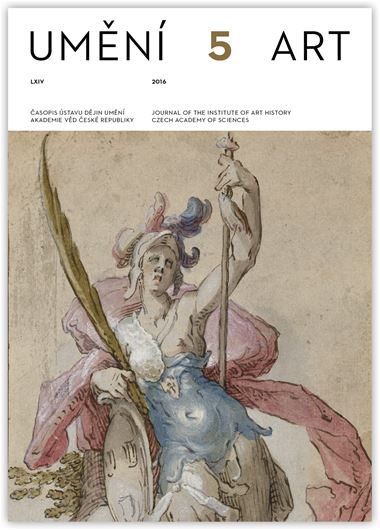Martina Knapová
Sběratelství a ambiciózní výstavní projekty: Spolek výtvarných umělců Mánes jako mediátor Bourdellova vlivu v Čechách
At the turn of the 20th century, many European countries with Slavic roots looked to French sources of artistic inspiration, regarded as the ideal in art. The French influence on Czech art spread not only through works created by native Czech artists who went to Paris to train, but also through exhibition activities, which were accompanied by a growing interest in acquisitions of art among Czech collectors. A key intermediary in spreading the French artistic influence was Mánes Union of Fine Artists (Spolek výtvarných umělců Mánes), which had been organising exhibitions introducing the Czech public to French art since 1902, when the work of August Rodin was shown in Prague for the first time. Six years later members of the Union formed ties with Émile-Antoine Bourdelle and in 1909 organised a Prague retrospective of this sculptor’s work. Members of the Union regularly exchanged official and private letters with Bourdelle, and this correspondence contains usually interesting but hard to verify details about the preferences of contemporary collectors, who were often guided by price when choosing a work of art to buy. One of the main reasons why most of the desired purchases were never made was that the buyer could not afford the price. The Union acted as a key intermediary in spreading Bourdelle’s artistic influence for a long period of time and tried to keep the sculptor’s legacy alive even after the conclusion of the exhibition in Prague. Official correspondence between the sculptor and members of the Union lapsed after the exhibition, but was revived in 1919–1927. In the meantime, however, the Union had prepared a second exhibition of Bourdelle’s work held in 1912, and, for example, it offered a permanent loan of two Bourdelle works that it owend. After Bourdelle’s death, the Union communicated with his widow, Cléopâtre Bourdelle, in an effort to bring to life an ambitious project to organise a posthumous exhibition devoted to the sculptor. In the end the tribute to Bourdelle took place on a more modest scale with the inclusion of two of his works in the Union’s 150th exhibition.
Full-text in the Digital Library of the Czech Academy of Sciences:
https://kramerius.lib.cas.cz/uuid/uuid:4e160c3d-7c2b-4588-9255-f32e689d3f5b
< back

